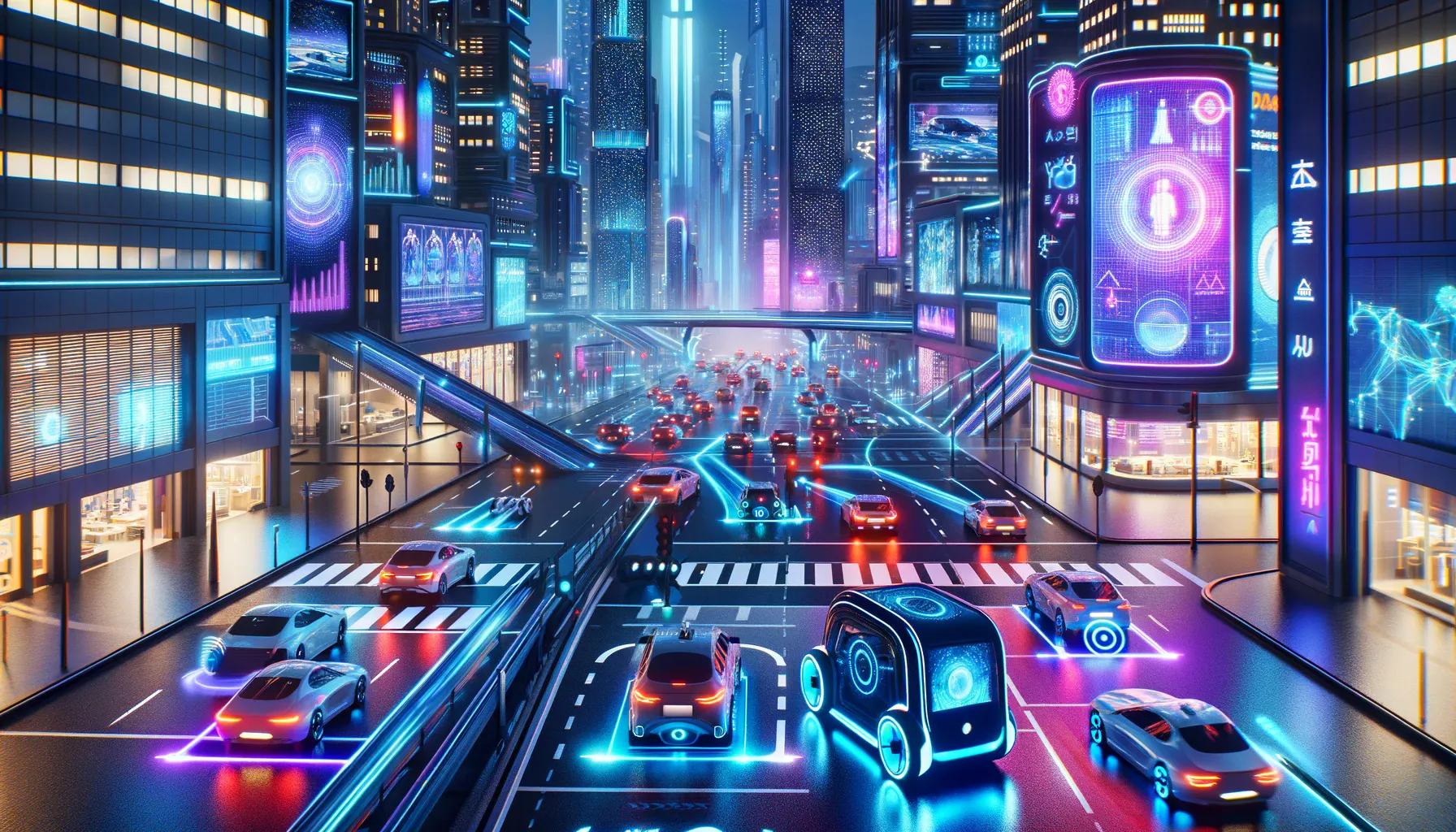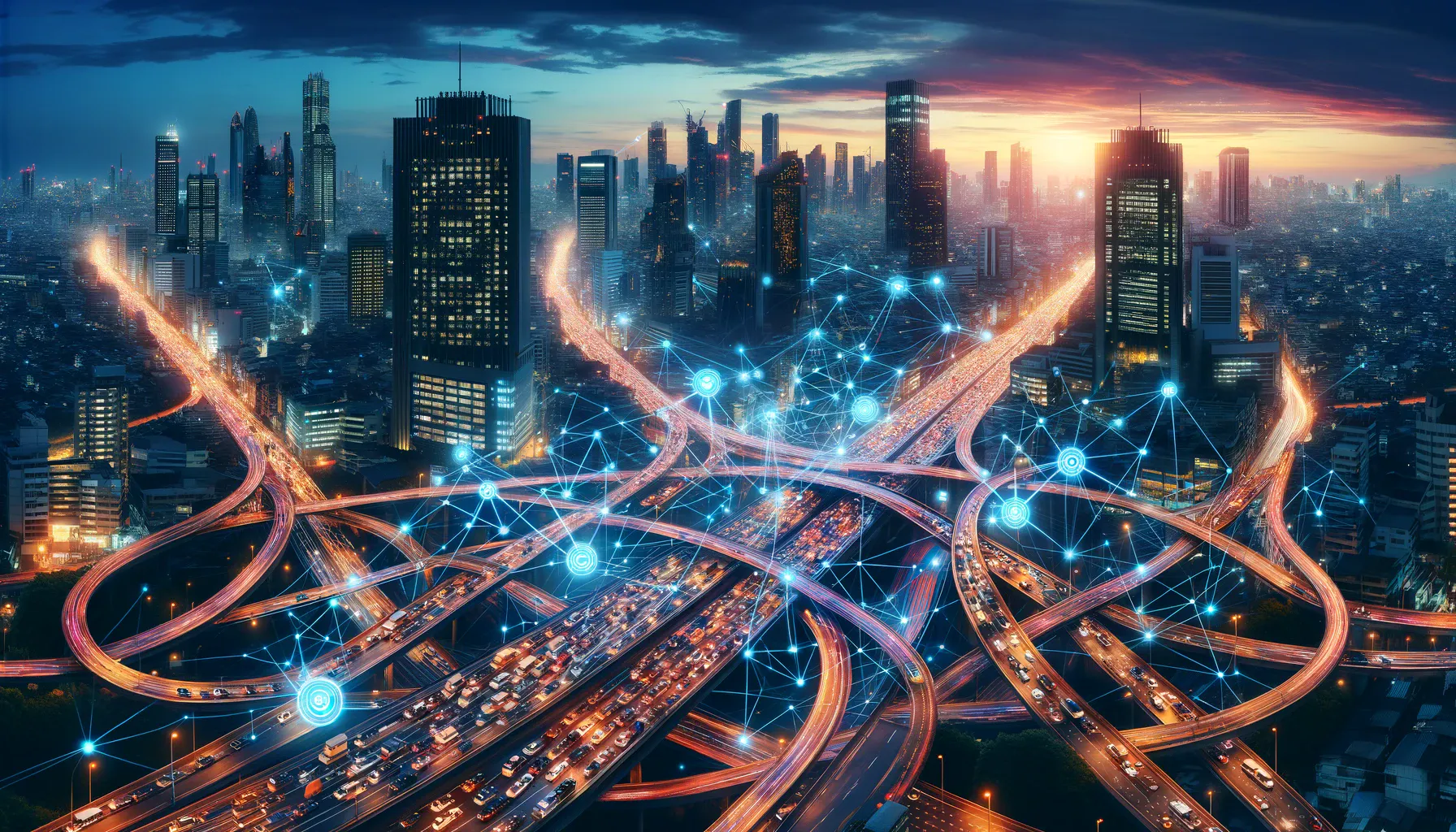Table of Contents
Urban mobility is currently immersed in a transformative tango, and at the forefront of this intricate dance is artificial intelligence (AI), orchestrating a seamless and efficient transportation ballet. As cities around the world grapple with escalating traffic congestion and the pressing need for sustainable, accessible transportation solutions, AI emerges as a guiding force reshaping the urban mobility landscape.
The advent of AI in this domain signifies a departure from conventional approaches, introducing dynamic and data-driven strategies that optimize traffic flows, enhance public transit systems, and revolutionize the overall mobility experience for urban dwellers.
Explore the domain of “Urban Mobility Optimization,” this article aims to unravel the multifaceted role AI plays in redefining how we navigate our cities. By scrutinizing real-world instances from innovative companies, we gain valuable insights into the nuanced intricacies of this traffic tango and its profound impact on our daily lives.

1. Understanding the Dance of Urban Mobility Optimization
AI’s Role in Traffic Management
Urban areas worldwide grapple with the challenge of traffic congestion, resulting in not only frustrating delays but also environmental repercussions. Artificial Intelligence (AI) is emerging as a powerful solution for Urban Mobility Optimization to alleviate these issues.
Real-Time Traffic Analysis
AI algorithms, capable of processing immense volumes of actual-time data, analyze traffic patterns dynamically. Siemens, a global technology powerhouse, employs its SiTraffic Concert system to harness AI for adjusting signal timings in actual time. By doing so, the system minimizes congestion and optimizes the overall flow of traffic. This adaptive approach ensures that traffic signals respond to the dynamic nature of urban traffic, leading to smoother and more efficient transportation.
Predictive Analytics for Transportation Planning
Beyond immediate traffic management, Urban Mobility Optimization leverages AI’s analytical capabilities to extend to predictive planning, providing invaluable insights for long-term urban development.
Cubic Transportation Systems
Cubic Transportation Systems is a notable instance of a company leveraging AI for predictive analytics in transportation planning. By utilizing AI algorithms, Cubic analyzes diverse datasets, including historical traffic patterns, public transit usage, and demographic information.
This enables city planners to forecast future traffic demands accurately. Armed with this foresight, planners can make informed decisions about infrastructure development, optimize public transit routes, and plan expansions that align with the evolving needs of the urban populace. The result is a more proactive and efficient approach to urban development, with transportation systems that adapt to changing demands.
2. Urban Mobility Optimization: Smart Navigation and Mobility Apps
Dynamic Routing with Waze
Waze, a popular navigation app owned by Google, employs AI-driven dynamic routing to enhance urban mobility. The app collects actual-time data from millions of users, including their GPS locations, travel speeds, and routes.
By analyzing this data, Waze’s algorithms can identify traffic congestion, accidents, or road closures in actual time. The app then suggests alternative, less congested routes to drivers, contributing to individual time savings and, collectively, reducing traffic congestion on major routes.
Illustration
Suppose a driver in Los Angeles is heading towards downtown during rush hour. Waze, through its Urban Mobility Optimization AI algorithms, detects heavy traffic on the usual route and recommends a detour through less congested side streets. This not only helps the individual driver reach the destination faster but also diverts traffic away from the congested main route, benefiting the entire urban mobility ecosystem.

Uber’s AI-Driven Ride Optimization
Uber, a trailblazer in the ride-sharing industry, utilizes AI extensively to optimize its services. The platform employs algorithms that consider various factors in real-time, such as current traffic conditions, historical data, and the locations of both riders and available drivers. By analyzing this information, Uber efficiently matches riders with nearby available drivers, minimizing wait times and optimizing the utilization of transportation resources.
Illustration
In a bustling evening in New York City, Uber’s AI employs real-time data analysis for Urban Mobility Optimization. By identifying areas with high rider demand, the algorithm efficiently directs available drivers, considering traffic conditions to ensure optimal routes. This dynamic optimization minimizes wait times for passengers, maximizes driver-rider interaction, and enhances overall urban mobility efficiency.
3. Public Transit Transformation
Optimizing Bus Routes with Optibus
Optibus, a pioneering company in urban mobility optimization, exemplifies how AI is revolutionizing public transit. With a focus on Urban Mobility Optimization, Optibus utilizes advanced algorithms to analyze multiple factors, including passenger demand, traffic conditions, and historical data.
By doing so, Optibus optimizes bus routes and schedules, significantly enhancing the efficiency of public transit systems. Commuters benefit from reduced travel times, improved reliability, and a more seamless experience.

AI-Powered Metro Systems
In the field of metro systems, major cities such as Singapore and London are leading the way in integrating AI to optimize their transportation networks. For instance, Singapore’s Land Transport Authority (LTA) has implemented AI algorithms to analyze passenger flow, predict peak hours, and optimize train schedules accordingly. This ensures that trains are deployed efficiently, minimizing wait times and contributing to the overall reliability of public transportation in the city-state.
As urban centers continue to grow, such AI-driven innovations become increasingly crucial for managing the complexities of urban mobility and enhancing the overall quality of public transportation services.
4. Challenges and Ethical Considerations
Data Privacy Concerns
One of the foremost challenges in the domain of Urban Mobility Optimization is the delicate balance between leveraging data for enhanced efficiency and safeguarding individual privacy.
Companies at the forefront of this dance, such as HERE Technologies, a leader in location data and mapping services, grapple with ensuring that the data they collect for optimizing urban mobility respects user privacy. HERE Technologies uses anonymized and aggregated data to provide insights into traffic patterns, allowing for optimization without compromising the personal information of individuals.
Striking this balance is crucial to building public trust and ensuring the responsible use of data in the pursuit of urban mobility optimization.
Equity in Urban Mobility
As AI-driven solutions continue to shape urban mobility, the challenge of ensuring equitable benefits across all segments of the population comes to the forefront. Companies like TransLoc, a technology company specializing in public transit solutions, are addressing this challenge by actively working toward inclusive optimization.
TransLoc’s platform utilizes AI to optimize public transit routes, but the company also places a strong emphasis on serving underserved communities. By analyzing data to identify transportation deserts and strategically implementing solutions, TransLoc exemplifies the commitment to equity in urban mobility optimization. Prioritizing accessibility and affordability in AI-driven solutions is essential to building transportation systems that serve the diverse needs of entire communities, ensuring that no one is left behind in the quest for optimized urban mobility.

5. Future Trends and Innovations
Autonomous Vehicles and AI: The fusion of autonomous vehicles with artificial intelligence stands at the forefront of revolutionizing urban mobility. Tesla, a trailblazer in this arena, exemplifies the integration of AI into self-driving cars. Through its advanced driver-assistance system, known as Autopilot, Tesla vehicles utilize AI algorithms to interpret real-time data from sensors, cameras, and radar systems. This enables the car to navigate and make decisions autonomously, optimizing the driving experience.
Similarly, Waymo, a subsidiary of Alphabet Inc. (Google’s parent company), has been a pioneer in developing self-driving technology. Waymo’s autonomous vehicles leverage AI to process complex scenarios on the road, ensuring safe navigation and contributing to the overarching goal of optimizing urban mobility with enhanced safety and efficiency.
Integration of IoT in Urban Planning: The Internet of Things (IoT) is progressively becoming a linchpin in urban planning, ushering in a new era of interconnected infrastructure. One notable illustration is the CityBrain project in Hangzhou, China, led by Alibaba Cloud. This initiative integrates IoT devices, AI, and big data analytics to optimize urban traffic flow. By collecting real-time data from cameras, sensors, and other IoT devices, CityBrain processes the information to dynamically adjust traffic signal timings and reroute vehicles, contributing to the reduction of congestion. This innovative approach showcases how the integration of IoT into urban planning, with a focus on urban mobility optimization, can lead to tangible improvements in traffic management and overall city efficiency.

Conclusion
The traffic tango of urban mobility optimization, led by AI, resembles a symphony of innovation that holds the promise of shaping cities into more accessible, efficient, and sustainable spaces. Real-time illustrations from cutting-edge companies globally underscore the tangible impact of AI on transforming the way we navigate urban environments. Take Siemens’ SiTraffic Concert as a prime illustration, where AI algorithms dynamically adjust traffic signal timings to reduce congestion and enhance traffic flow, contributing to urban efficiency.
As this dance progresses, it becomes imperative to address challenges, such as those navigated by Optibus, a company optimizing public transit through AI-driven route and schedule optimizations, showcasing the need to uphold ethical standards in urban mobility. Ensuring that the benefits of this AI-driven dance extend equitably to all members of our communities is paramount. In embracing the technological dance of the traffic tango, exemplified by companies like Waze optimizing individual commutes, we step closer to a harmonious and optimized urban future where the focus on “Urban Mobility Optimization” becomes synonymous with inclusivity and progress.





